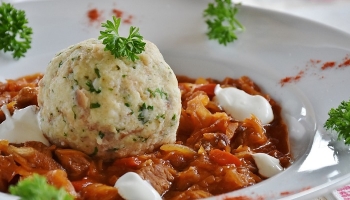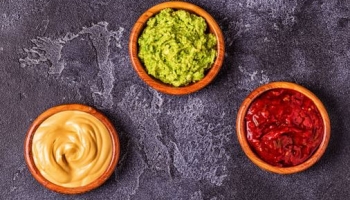Crab legs are a delicious way to enjoy seafood.
They’re also high in fat and sodium, so it’s important to store them properly. You want to make sure you maintain their freshness as well as possible so you can enjoy them at their best.
Unless you plan on maintaining a tank in your kitchen to keep live crabs on demand, you’re probably going to be storing your crab legs in a refrigerator.
So how long do crab legs last in the fridge?
Let’s discuss how long you can keep crab legs in the fridge before they go bad, what happens if you eat spoiled crab legs, and more.
Table Of Contents:
How Long Do Crab Legs Last In The Fridge?
You can store cooked crab legs in the fridge for up to 5 days. If you’re planning on cooking them, make sure you do so within three days of buying them.
When storing uncooked crab legs in your refrigerator, place them on a plate or other container that allows air circulation around them (this prevents moisture from building up). Cover with plastic wrap or aluminum foil to prevent unwanted aromas from getting into other foods.
How long do cooked crab legs last?
You can store cooked crab legs for about 4-5 days in the refrigerator, but it’s best to eat them within a day or two. If you don’t plan to eat them right away, freeze them so they’ll last longer.
To keep cooked crab legs fresh after freezing:
- Remove the packaging and discard any excess liquid that has been collected in the container.
- Wrap each cooked crab leg individually with plastic wrap or aluminum foil before placing it into freezer bags or containers.
- Store wrapped cooked crab legs in freezer bags or containers with 1/2 inch of space between each one so they don’t stick together.
- The ice crystals will cause water to collect at the bottom of your bag or container which may lead to freezer burn if left too long without moving around (this can happen even if you’re using vacuum-sealed storage methods.)
back to menu ↑
How Long Do Uncooked Crab Legs Last?

Uncooked crabs remain safe for about 2 days in the refrigerator as long as they’ve been stored properly and are handled correctly after being removed from their packaging.
If you want to keep your crab legs longer than 2 days when stored at optimal temperatures (38 degrees F or 4 degrees Celsius), it’s best to freeze them.
This will ensure that they stay fresh until needed.
back to menu ↑
How Long Do Crab Legs Last In The Freezer?

Crab legs will keep for up to 6 months if stored well. As with any food that you freeze, it’s important to know how to properly prepare them before freezing so they don’t become too dry.
If you’re not going to use them right away, store them in a resealable plastic bag or container and place them flat in the freezer until completely frozen.
This will help prevent moisture from escaping. Once frozen, wrap the legs individually in plastic wrap or aluminum foil for easier storage and thawing later—you’ll want to thaw them completely before cooking or serving!
back to menu ↑
Does Freezing Kill Parasites?
Freezing will kill any parasites that may be on the crab legs. Cooking will kill any remaining parasites that survived the freezing process.
Either way, the potential existence of parasites won’t damage the meat.
If you are concerned about possible contamination, you can freeze your crabs for up to three months. When freezing for longer than three months, it is best to keep them in their cartons—and not remove them until they are ready to use.
back to menu ↑
How To Tell If Crab Legs Are Spoiled?
Previously we talked about how to tell if your dragon fruit is bad or not. It’s a recurring theme because it’s so important for your health!
If you’re unsure whether your crab legs are safe to eat, check the following:
Look for discoloration.
Crab legs that have spoiled will look dull and grayish-brown in color. If any areas of the meat appear darker than others, it’s likely a sign that they’ve gone bad and should be thrown out.
Smell them.
Spoiled crab meat can give off an unpleasant odor (like ammonia), so smell them before eating them. If they smell foul or rancid, throw them out immediately!
Examine the texture.
Check the texture of your crab legs’ meat by pinching it between two fingers. If it feels mushy or soft rather than firm and springy, there’s a chance that bacteria has begun breaking down its proteins into acids—meaning it may not be safe for consumption anymore either way).
back to menu ↑
Conclusion:

Now that you know the answer to the question: “How long do crab legs last in the fridge?”, you can enjoy them without worrying about spoilage.
As a rule of thumb, it is best to eat within one week of purchasing them.
But try to enjoy them within the first two days.
If you buy frozen and want to keep them for longer than two weeks, make sure you seal them well and freeze them properly.
back to menu ↑
Frequently Asked Questions
What happens if you eat bad crab legs?
If you ingest bad crab legs, you may experience food poisoning. Symptoms include:
● Fever
● Diarrhea
● Vomiting
● Cramping
back to menu ↑
What is the best way to store crab?
You can store them in the refrigerator or freezer. The best way to keep them fresh is to store them in an airtight container and keep them on the bottom shelf of your fridge.
They should last up to 2 days in the refrigerator, but no longer. When you bring home your fresh crab legs, you’ll want to cook them within a day or so (if possible).
If you plan on freezing your crab legs at all, it’s important that they are properly packaged before being put into storage. You’ll want to wrap each leg individually and then place all of them into one large plastic bag with plenty of room for air circulation (if possible).
Once they’re wrapped and sealed inside this plastic baggy, place this entire package into another freezer-safe bag with more room inside—this will help protect against freezer burn as well as any other damage that may occur from improper packaging and handling outside of proper food storage practices.
back to menu ↑
What does spoiled crab taste like?
You’ll know if your crab legs are spoiled by their smell and taste. If they’ve gone bad, they may have an overwhelming fishy taste. Or they may have a rancid flavor that’s incredibly sour.
This will be overpowering, so if you detect it, you’ll recognize it right away. Just don’t eat them. You may also experience diarrhea or stomach ache after eating bad crab legs.
Sometimes food poisoning can occur after consuming spoiled seafood like crab and shrimp—so it’s important to check for spoilage before eating them!
back to menu ↑
Are crab legs high in sodium?
Yes, they are high in sodium.
Sodium is a mineral that’s essential to life. It helps keep the body’s fluids balanced and plays an important role in muscle contraction and nerve impulse transmission.
Sodium is found in many foods, including crab. A 3-ounce serving of king crab contains 998 milligrams of sodium—more than half your daily recommended intake if you’re eating 2,300 calories per day (the average for most adults).
In fact, this same serving contains more than half the 1,500 mg limit set by the Dietary Guidelines for Americans for total daily intake from all sources combined!
So what does this mean for people who love a good seafood dinner?
While there’s nothing wrong with enjoying a few tasty meals with friends or family members over dinner time, it’s important to remember that too much sodium can lead to some serious health problems like high blood pressure and heart disease over time.
So, ensure you’re watching what foods go into your diet plan to avoid these types of risks altogether!
If you’re looking for a savory, low-sodium alternative, try the chicken sausage!
Shanny
Shanny not only has an exceptional understanding of the foodie mindset and how nutrition works, she has also achieved her Master’s Degree in Education. Outside of her academic achievements, she loves writing food blogs. It's so much more than a list of meals though! Shanny creates helpful cookware guides and delicious recipes that are easy to follow. She does all of this as a food blog writer because she loves it. That's why she spends lots of time testing out different recipes in her own home. She truly is a one-of-a-kind foodie, from her home to yours - with a story to tell, new recipes to indulge in and new tips to tantalize those tastebuds.












